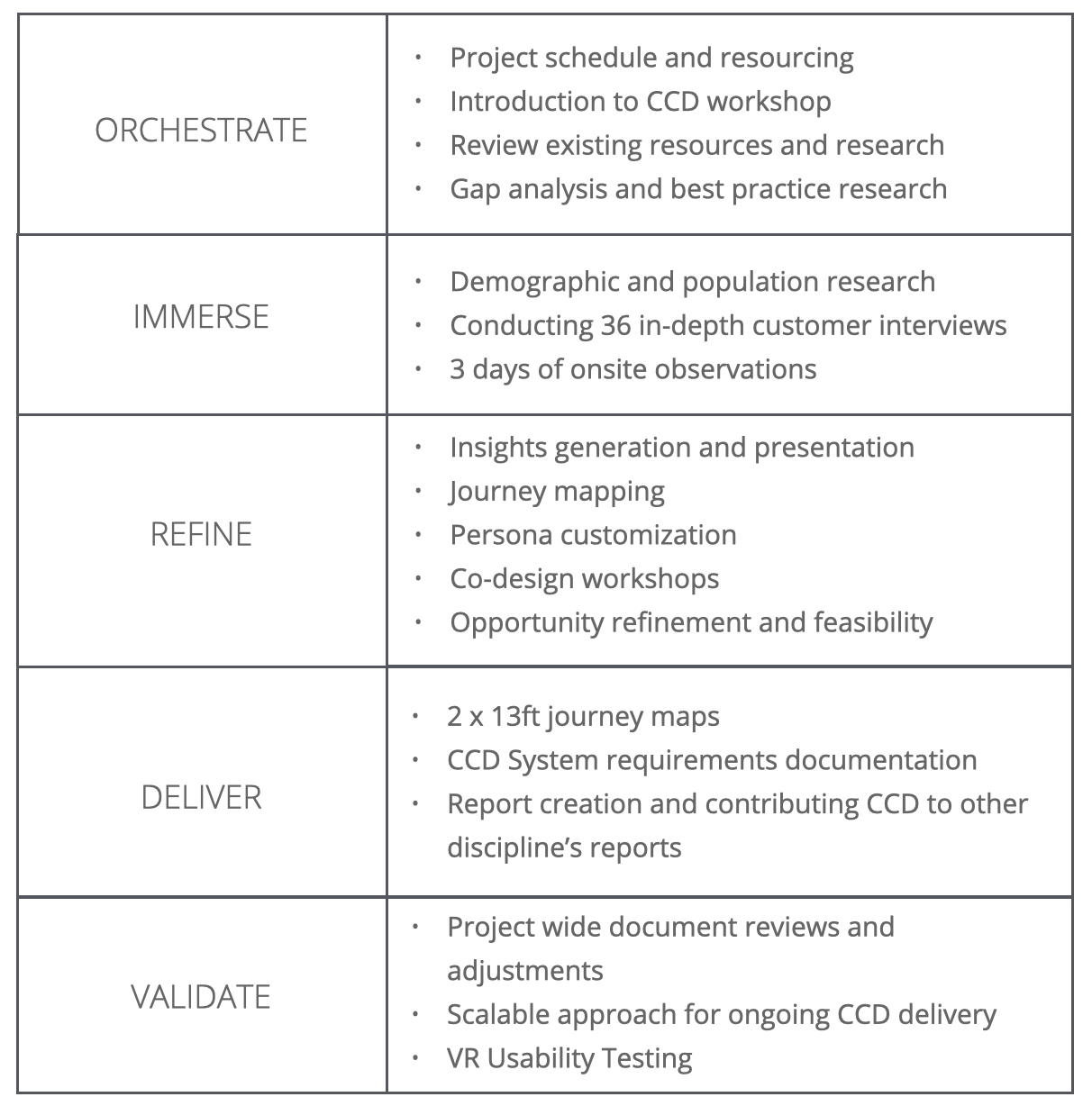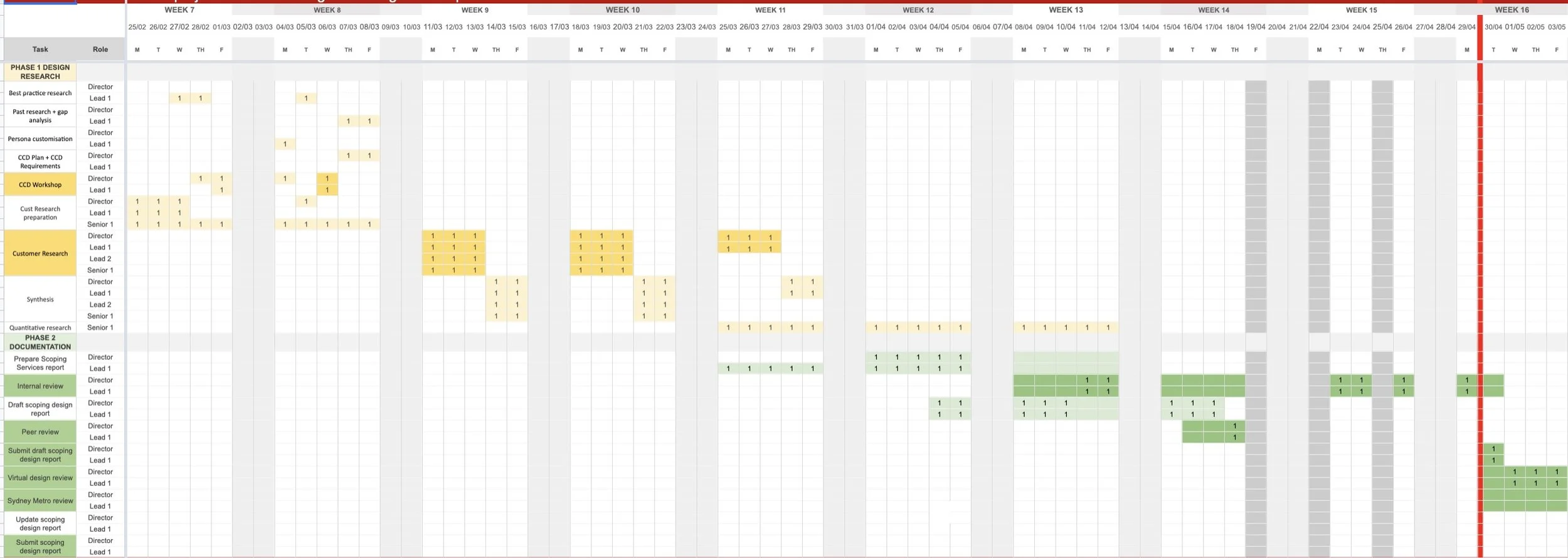
Sydney Metro and ARUP
A built environment and service strategy to establish a foundation of customer centric design and create an ‘easy’ metro experience standard.
Project Goal
Our remit was to partner with architects, engineers, and program leadership to embed CCD principles into the earliest stage of a metro infrastructure project– designing an entirely new train line.
My Role
User Researcher | Service Design | Strategist.
As Lead Experience Designer, I delivered project scoping, user research, and creating deliverables. This career-changing project involved multiple touch points including digital, physical, sensory, social, and integration with 30+ disciplines.
Impact
Invited to audit 30+ practices plans for usability misalignment.
Embedded user experience via 109 CCD adjustments prioritized by impact.
Despite the project's development being 5 years away at the time, our successful integration led to over a year of extended engagement.
Project scoping and process
This project encompassed three key stages, four major deadlines, and resourcing scalability from 2 to 8 resources. I worked with our sales team to scope the RFP sections into a project plan, engage the client for kickoff and manage timelines and flexibility as we gained more knowledge throughout the project.
Researching users of the future
We crafted a vision of the ‘user of the future’ by combining demographics research, in-depth interviews, and observations. Using ‘proxy’ users derived from our research, we explored current mental models, expectations, and behaviors, uncovering the gap between what users say and do. This holistic approach, enriched by future tech trends and global best practices, enabled us to predict future customer needs while leaving room for refinement.
Quick stats…
17 Line differentiator research gaps uncovered
8 Benchmarking best practice insights created
36 In person interviews
2 Days Observational Research
Deliverable: Unique-to-line personas - divided by their ultimate priority when traveling, each persona deliverable outlines mindset, questions and challenges, response to stress, relevant design principles and their ‘spatial envelope’ (which was important for future design work with architects).


